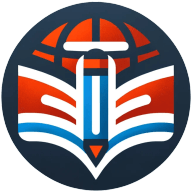6 Ways to Connect Subjects for Deeper Interdisciplinary Learning in K-12 Education
Discover effective strategies for connecting different subjects in K-12 education that create meaningful learning experiences. This article presents six practical approaches to interdisciplinary learning, including how to link science and language through real-world issues. Leading educators and researchers share their insights on how these connections help students develop deeper understanding across multiple subject areas.
Link Science and Language Through Real Issues
I once linked science and language arts through a "Public Awareness Campaign" project on invasive species. Students researched the science behind the problem, then used that knowledge to write persuasive letters or create informational pamphlets for the community. The connection gave purpose to both subjects—they weren't just learning facts but using evidence to advocate for real issues. That blend of data and communication helped them think critically and see how learning can make an impact beyond the classroom.

Create Thematic Units Across Multiple Subjects
Thematic units across multiple subjects create natural bridges between different areas of knowledge. Teachers can select a central theme like 'water' and explore it through science experiments, literature about oceans, mathematical calculations of volume, and geographical studies of water systems. Students begin to see knowledge as interconnected rather than isolated in separate classroom periods.
This approach helps develop critical thinking as learners transfer concepts between domains and recognize patterns across disciplines. The brain naturally makes connections, and thematic teaching capitalizes on this tendency for more meaningful and memorable learning experiences. Start planning your next term around engaging themes that can unite your curriculum areas.
Connect Historical Contexts to Current Issues
Connecting historical contexts to current issues helps students understand both the past and present with greater depth and meaning. When examining current environmental challenges, exploring the industrial revolution provides crucial background on how certain problems developed over time. Students gain perspective on how knowledge evolves and how past decisions continue to influence contemporary society.
This approach helps develop media literacy as students learn to recognize historical patterns and apply that understanding to evaluate current events more critically. The temporal connections help students see themselves as part of an ongoing human story rather than isolated in the present moment. Challenge your students to identify historical roots of a current topic in your community or the wider world.
Transform STEM With Arts Integration
Integrating arts into STEM subjects transforms technical learning into a more creative and accessible experience for diverse learners. The STEAM approach recognizes that artistic elements like design thinking, visual representation, and creative expression enhance understanding of technical concepts. Students who might struggle with abstract scientific or mathematical ideas often connect more deeply when allowed to explore these concepts through artistic mediums.
This integration acknowledges the historical reality that many great scientists and mathematicians were also accomplished artists who used creative thinking to advance their technical work. The combination helps develop whole-brain thinking rather than artificially separating logical and creative thought processes. Explore ways to incorporate drawing, music, or dramatic elements into your next science or math lesson.
Guide Multi-Disciplinary Inquiry-Based Investigations
Inquiry-based investigations spanning multiple disciplines help students develop research skills while discovering connections between subjects. When students pursue questions that naturally cross subject boundaries, they learn to gather evidence from various sources and synthesize information more effectively. The teacher serves as a guide rather than the source of all knowledge, encouraging students to consult experts across different fields and recognize the value of diverse perspectives.
This approach mirrors how actual researchers work, rarely confined to single-subject thinking when tackling complex problems. The resulting investigations tend to be more engaging because they follow student curiosity rather than predetermined paths. Identify a compelling question with your students that requires exploration across traditional subject boundaries.
Design Cross-Curricular Projects That Solve Problems
Cross-curricular projects that solve real problems motivate students by demonstrating the practical application of academic knowledge. For instance, designing a school garden requires mathematical measurements, scientific understanding of plant biology, research skills, and artistic design elements working together. Students develop deeper comprehension when they must apply concepts from multiple subjects to achieve concrete results.
This approach mimics real-world problem solving where challenges rarely conform to the artificial boundaries of school subjects. The authenticity of these projects often leads to higher engagement levels and retention of material compared to traditional separated instruction. Consider identifying a local community issue that your students could address using skills from across their curriculum.

